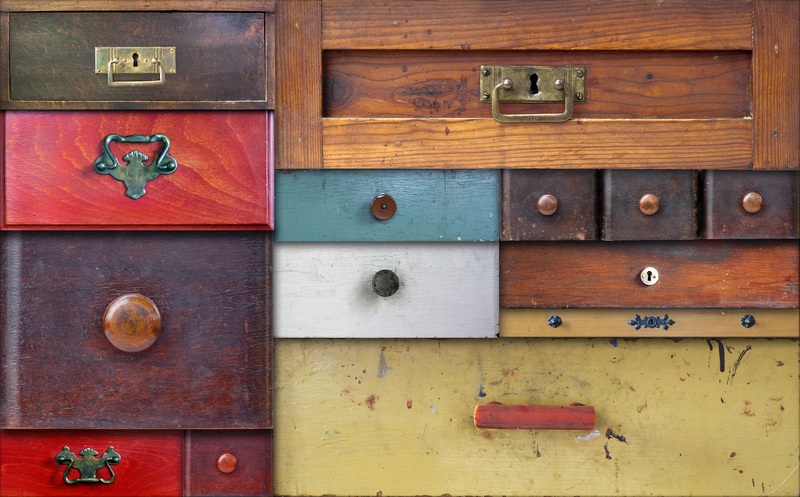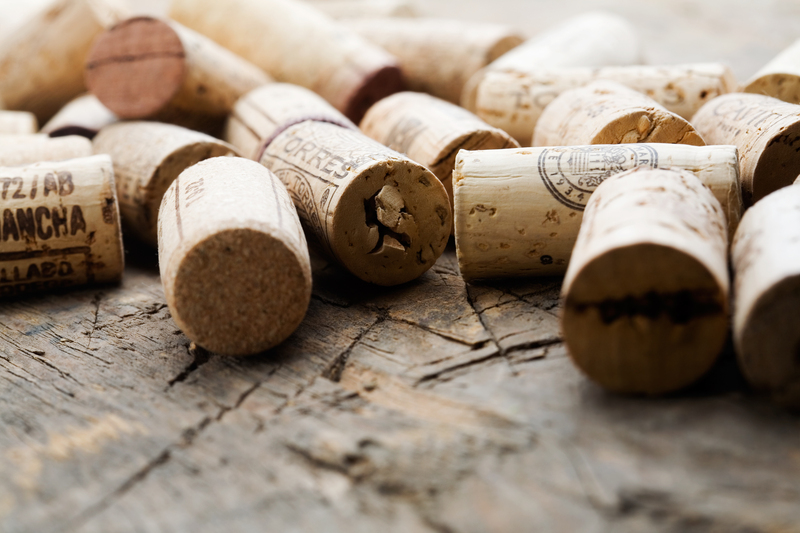Tips for Sorting and Recycling Different Types of Cookware
Recycling and sorting old cookware isn't always as simple as dropping it into your recycling bin. With the rise in environmental consciousness, more people are asking, "How do I properly dispose of cookware?" This comprehensive guide offers expert tips for sorting and recycling various types of cookware, from stainless steel pots to non-stick pans, ceramic bakeware, and more. Whether you want to reduce waste, comply with local recycling guidelines, or give old pots and pans a new life, read on for actionable advice.

Why Should We Recycle Old Cookware?
Before we get into the practical steps, it's important to understand why recycling cookware matters. Cookware can be made from a variety of materials--metal, aluminum, stainless steel, cast iron, ceramic, glass, copper, and even Teflon-coated surfaces. If improperly disposed of, many of these items end up in landfills, where they do not decompose and may release toxins. Recycling cookware reduces landfill waste, conserves resources, and lessens our environmental impact.
Environmental Benefits of Proper Cookware Disposal
- Reduces landfill waste: Many cookware materials take centuries to break down.
- Promotes resource recovery: Metals and glass can be reused for new products.
- Prevents hazardous material leakage: Certain coatings and metals can cause environmental harm if left unmanaged.
- Encourages sustainable living: Sets a positive example and helps in the creation of a circular economy.
Identifying the Types of Cookware You Want to Recycle
Before you set aside your old pots and pans for recycling, you need to identify their material. This determines how--and if--they can be recycled.
Common Types of Cookware Materials
- Stainless steel cookware
- Cast iron pans and pots
- Aluminum cookware
- Non-stick (Teflon-coated) pans
- Copper-bottomed cookware
- Ceramic bakeware
- Glass cookware or lids
- Enamel-coated cookware
*Tip:* Turn your pot or pan over and look underneath; many manufacturers list the material or include a recycling symbol.
How to Sort Cookware for Recycling
Not all recycling centers accept every type of cookware due to their different materials and coatings. Sorting cookware by type improves recycling efficiency and prevents contamination. Here are steps to properly sort your used cookware:
- Clean Thoroughly: Remove food residue and oils. This applies especially to non-stick and greasy cast iron items.
- Separate by Material: Group stainless steel, aluminum, cast iron, ceramic, and glass separately.
- Remove Non-Metal Parts: Separate plastic handles, silicone grips, or glass lids from metal bases where possible.
- Check for Labels: Look for recycling symbols or manufacturer instructions. Some cookware is labeled as non-recyclable.
- Test with a Magnet: Magnets stick to steel and cast iron, helping differentiate between magnetic and non-magnetic metals.
Recycling Stainless Steel, Cast Iron, and Aluminum Cookware
Why Are Metals Easy to Recycle?
Metal cookware like stainless steel, cast iron, and aluminum is highly recyclable, thanks to its value as scrap metal. These materials can be melted down and repurposed into new items without losing durability or quality.
Best Practices for Recycling Metal Cookware
- Remove Non-Metal Attachments: Take off rubber, plastic, or wood handles and any non-metal components.
- Contact Local Scrap Yards: Most metal scrapyards accept pots and pans made from steel, cast iron, or aluminum.
- Drop-Off at Metal Recycling Facilities: If curbside recycling doesn't accept cookware, a metal recycling center likely will.
- Check Your Municipal Recycling Guidelines: Some cities accept metal cookware in blue bins; others do not.
- Prepare for Donation: If your cookware is still in good condition, consider donation instead of recycling (e.g., shelters, thrift shops).
*Pro Tip:* If your cookware is bent or otherwise unusable, label it as "scrap metal" to help recycling center staff sort it correctly.
Challenges in Recycling Non-Stick (Teflon) and Coated Cookware
Cookware with non-stick coatings--often called Teflon or PTFE--presents a unique recycling challenge. Most recycling centers do not accept non-stick pans with the coating still on, as the chemicals can't be safely processed.
What to Do with Old Non-Stick Cookware?
- Strip the Coating (If Possible): Some scrap yards will accept the pan base if the non-stick coating is removed, but this is difficult and not always feasible at home.
- Ask the Manufacturer: Some cookware brands, like Calphalon, offer recycling programs or take-back schemes.
- Upcycle or Repurpose: Reuse the pans as planters, craft containers, or organizational bins.
- Donate if Safe: If the non-stick surface is still intact and safe to use, consider donating to second-hand stores or charities.
- As a Last Resort: If none of the above are possible, the pan may need to go into general waste.
Important Safety Note:
Never incinerate non-stick cookware, as this can release toxic fumes.
How to Recycle Glass Lids and Bakeware
Glass cookware and lids (e.g., Pyrex, borosilicate glass) do not melt at the same temperature as standard glass bottles and jars, meaning many curbside programs will not accept them.
Options for Disposing of Glass Cookware
- Special Recycling Centers: Search for local facilities that accept heat-resistant glass.
- Repurpose: Old glass lids make excellent trivets or garden stepping stones.
- Donation: If unchipped and usable, donate to charity shops or community kitchens.
- Otherwise: If recycling options are unavailable, dispose of glass cookware safely to prevent injury or harm.
*Did you know?* Because of their chemical structure, glass cookware and drinking glasses shouldn't be mixed with regular glass recycling streams.
What About Ceramic and Enamel-Coated Cookware?
Ceramic pieces and enamel-coated cookware (such as Dutch ovens) aren't widely recyclable. Test local recycling policies before disposing, as most ceramics can't go into standard recycling due to melting temperature differences.
Best Practices for Ceramic Cookware Disposal or Repurposing
- Contact Local Recycling Centers: Some facilities accept certain ceramics for specialized recycling.
- Donate or Repurpose: Use old ceramic bakeware as flowerpots, serving dishes, or creative decor around your home or garden.
- Dispose Responsibly: Wrap broken pieces in newspaper and label as 'ceramic' before placing in general waste.
How to Handle Copper-Bottomed Cookware
Copper is a valuable, recyclable metal, but copper cookware may have mixed materials (like a core of aluminum or a tin lining). Scrapyards will often accept solid copper cookware if it's separated from non-copper components.
Steps for Recycling Copper Cookware
- Remove Steel, Tin, or Aluminum Layers: If possible, separate the copper for higher recycling value.
- Contact Scrap Yards Directly: They may offer advice or even separate mixed material items for you.
- Check for Historic or Antique Value: Some copper pans may be valuable to collectors and worth selling or donating.
Eco-Friendly Alternatives to Throwing Away Cookware
Creative Repurposing Ideas
- Garden Planters: Small pots make quirky planters or flower containers.
- Storage Solutions: Use old pans to organize tools, art supplies, or hardware.
- Candle Holders/Decor: Deep pans make novel candle basins or kitchen wall art.
- Bird Feeders: Shallow pans can transform into sturdy bird feeders or baths for your yard.
- Donation: If cookware is usable, donation is always preferred over recycling or trashing.
Finding Cookware Recycling Programs in Your Area
- Call Your Local Recycling Center: Policies differ by location. Ask specifically about cookware materials and mixed-metal items.
- Check Manufacturer Take-Back Programs: Brands like Calphalon or GreenPan sometimes offer mail-in recycling options.
- Look for Municipal Bulk Waste Collection: Some cities hold periodic scrap metal collection events.
- Online Resources: Websites like Earth911 can help you locate the nearest facilities that accept old cookware.
Tips to Make Sorting and Recycling Cookware Easier
- Keep Materials Separated: Mixing materials (e.g., glass with metal) can contaminate recycling streams.
- Label Items for Recycling: Stick a note on items for drop-off, making it clear what material they are.
- Document and Check Local Guidelines: Recycling rules differ dramatically between cities.
- Clean Off Food Residues and Oils: Pots and pans must be as clean as possible before recycling.
- Educate Your Household: Share these practices with family or roommates to keep everyone on the same page.

Frequently Asked Questions About Cookware Recycling
Can all types of cookware be recycled?
Not all cookware can be recycled in regular curbside bins. Metal cookware (like stainless steel, aluminum, and cast iron) is most recycling-friendly, especially if you remove non-metal attachments. Non-stick, glass, ceramic, and enameled cookware often require special handling or repurposing.
Do I need to remove all plastic or rubber before recycling cookware?
Yes. Always remove any non-metal parts--a little leftover is okay for scrap yards, but excessive plastic or rubber should be discarded to prevent contamination.
Can I place old pans and pots in my curbside recycling bin?
Check your local recycling rules first. Most curbside programs don't accept large metal items, especially cookware with mixed materials. Separate drop-off at a recycling center or scrap yard is usually necessary.
What should I do with non-stick cookware that's damaged or flaking?
Do not recycle it in regular bins or at scrap yards unless the coating is fully stripped. Consider manufacturer take-back programs, or as a last resort, place it in regular waste if no safer options are available.
How can I repurpose old cookware?
You can turn worn-out cookware into garden planters, tool organizers, bird feeders, or creative art projects around your home or yard. Repurposing adds value and keeps items out of landfills.
Conclusion: Responsible Cookware Recycling Is Good for the Planet
Sorting and recycling different types of cookware properly helps conserve resources, reduce waste, and protect the environment. Whether you're recycling a single pan or cleaning out an entire kitchen, knowing the specifics for each material type ensures a more sustainable process.
To recap, always separate materials, check local guidelines, clean your cookware, and look for unique recycling or repurposing options for tricky items like non-stick or glass bakeware. The more people practice responsible cookware disposal, the bigger the positive environmental impact.
If you found these tips for sorting and recycling cookware helpful, consider sharing this guide with your friends and family. Together, we can make our kitchens--and the planet--cleaner and greener.
